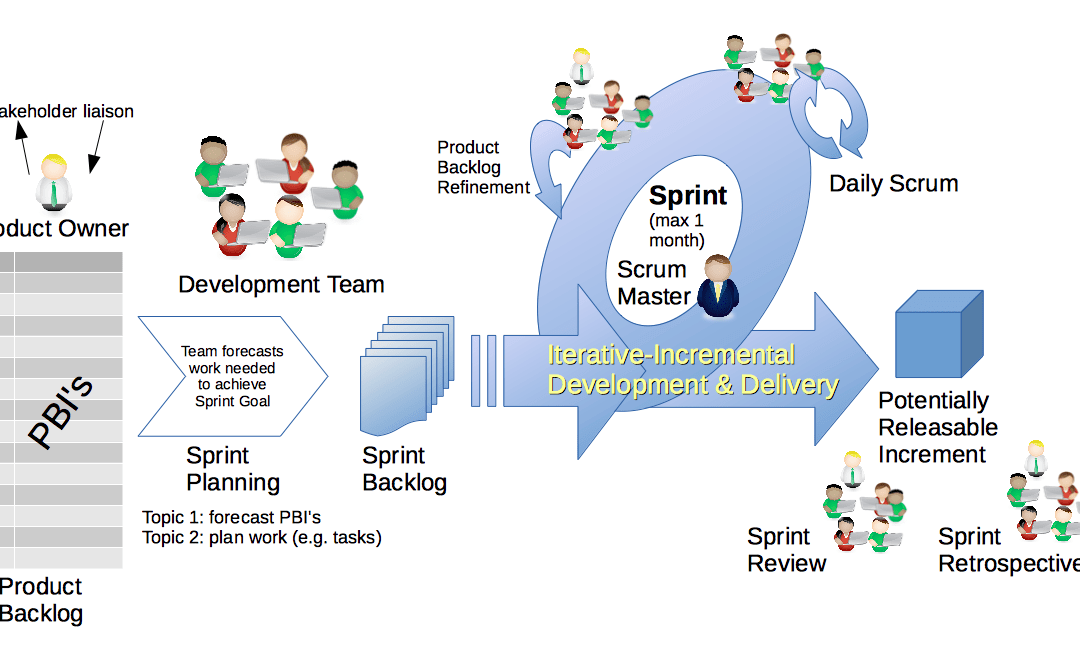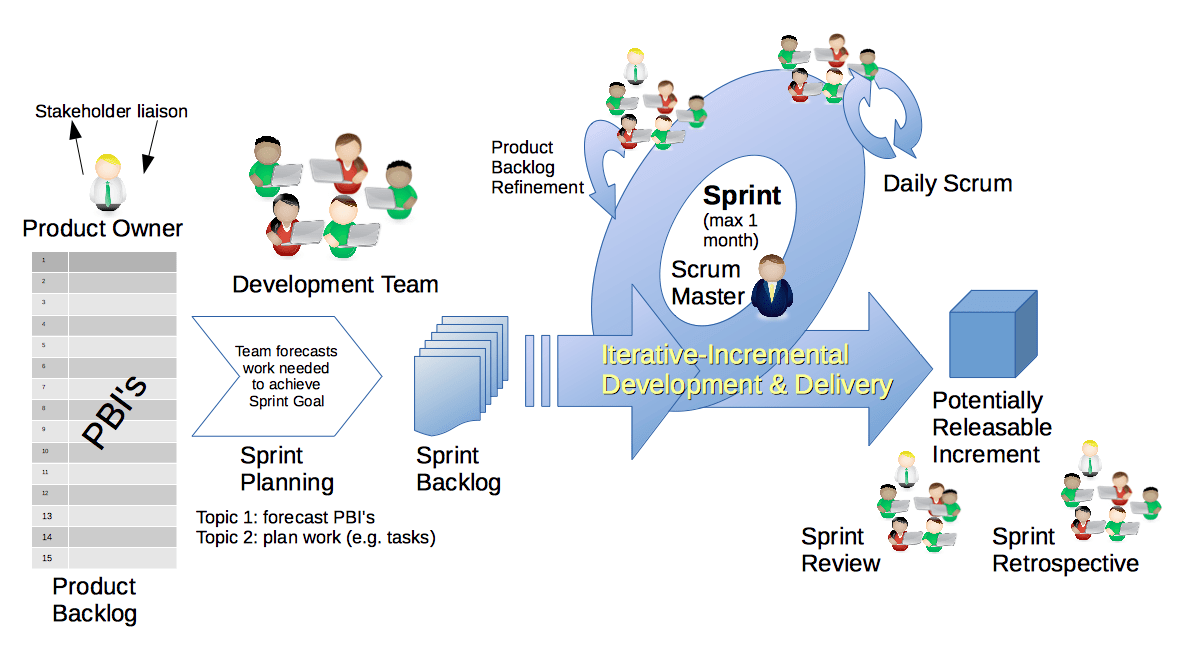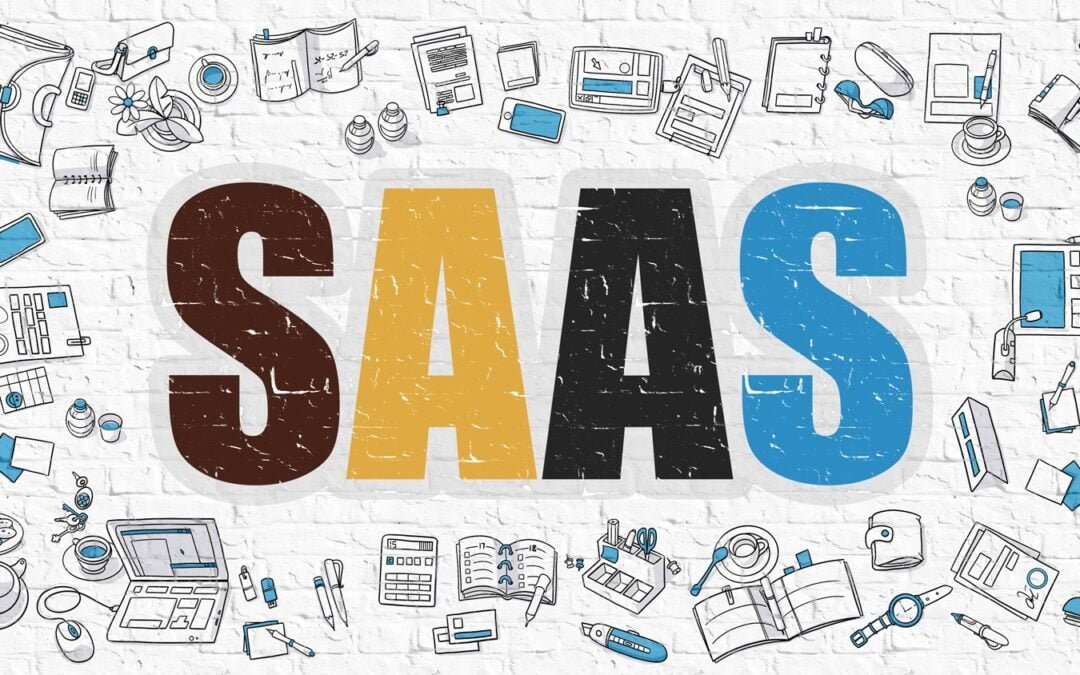
Agile Methodology, Customer Experience, Nearshore, Product Development, Project Management
Practices required for distributed teams: Basically Agile (and Scrum!)
The use of the agile methodology in combination with the Scrum framework is a widely accepted industry standard for software development throughout the world. Together the methodologies provide an iterative and collaborative system that has been proven to be adaptable and resilient over a wide range of implementations by teams in the industry.
What makes the combination of these methodologies so attractive and useful in the development of software?
- An adaptable framework for iterative software development that provides the customer working software for evaluation in regular, short increments.
- The ability to deal with incomplete or fluctuating product development concepts during the process of development in a way that allows discovery and adjustment as needed.
- The project team includes formal roles and responsibilities for both the client, development team and each individual in decision making during the development process.
- The inclusion of systems for communication, trust, and collaboration across the entire product development team.
- Recognition that the availability of team members for consultation during core working hours is critical to the iterative production process to assure alignment and to allow adjustment as needed.
- The production process includes regular daily meetings, as well as meetings for production assessment and planning that are focused on understanding the status of committed work, clearing production obstacles, and making adjustments where necessary to achieve goals the team has committed to accomplish.
- Outcomes that have proven to be beneficial to both the client and the development team in the development of successful software applications.

Of course, if you dig into the implementation details of agile and scrum for software development, you will find a number of additional benefits. Each team and project can and does adapt the processes within the framework to fit the constraints of their situation. But with the focus on real-time collaboration and face-to-face interaction, what happens when circumstances combine to require the use of agile and scrum across a team that is distributed across geography? Can the agile-scrum framework be adapted to a distributed team? That is the focus of this five-part series – Best Practices for Distributed Agile Teams.
Adapting Agile & Scrum to a Distributed Team
With the availability of broadband network access across the Internet, as well as the benefits and pressures provided by a global marketplace and workforce – it is critical that the benefits of the agile – scrum framework can be both adapted and scaled to provide their benefits to distributed teams. For the purposes of this series, we will consider any team that has members who are not physically in the same location during core working hours, they are distributed. That could mean the team is spread across a metropolitan area where colocation is both time-consuming and expensive or the team is spread across a wider area – across states or national borders.
The business advantages of opening horizons for software development by distributed teams are relatively obvious:
- A distributed model brings a wider field of skills and expertise into play, often with lower costs.
- Varied experience in both technology and problem-solving can bring more answers to the table with a lower cost of recruitment and faster fulfillment of specialized requirements
- Entire teams can be sourced with less time, training and deeper experience in leveraging agile-scrum for software and product development.
The scenarios for distributed development can include:
- Development team together in a development center with
- Client in a different location, same time zone
- Client in different location and time zone
- Split development team
- The development team is split between locations or combined with a client team in another location or both
- Same time zones or different time zones
- Various combinations – split client team, outside consultants, single team members remotely located
Continuity is Key
Regardless of where the client is, adaption to a distributed agile – scrum model is critical to ensure the involvement of key stakeholders, development and product teams and to achieve the benefits of the framework in projects. In fact, at Scio, we have found that consideration and inclusion of the practices required for distributed teams are critical to all our software development projects – whether they are considered to be «distributed» or not. We have found:
- Using the practices required for distributed teams provides a more scalable base for all software development teams.
- If distributed team practices are not in the standard agile repertoire:
- New projects that require a distributed team have a longer ramp to productivity because team members have to adapt to new tools and practices.
- Projects face a higher risk because situational adaptions selected by teams may not be proven and optimal.
- Teams may have to spend many cycles dealing with organizational issues to reach full productivity.
So, from our experience – adaptations of the agile-scrum methodology and framework to allow a distributed team environment is just good practice. They bring many benefits, including better communication, formalized technical environments, and organizational adaptions. They are a critical part of our work environment and our commitment to our clients.
During the following four parts of this series, we will explore some of the best practices Scio has found to be beneficial for distributed teams and some of the myths that we find are common when the idea is considered by organizations. We hope you will stay with us because there is a lot to know about leveraging a distributed team environment successfully for software development.

Agile Methodology, Customer Experience, Nearshore, Project Management, Successful Outsourcing
First, let me say this is not an article for budding sociologists or business leaders who think that the last 20 years of increased person-to-person connectivity across the world, with the Internet, social media, entertainment and globalization, have broken down the differences in cultures across the world. The world has changed to be sure, but not on the scale you might imagine. People across the world still see things differently and interact based on their point of view, and that is as true in business as it is in international politics.
Culture actually takes a long time to change, whether we are considering an established business or even more so, a country or region. Studies have shown that the recent growth in communications across the world has only added to the social stereotypes we have to cut through to understand individuals from other cultures. And this is not to say that everyone within a culture will have the same values and drivers. While sociological texts provide many comparisons between cultures, they are at best, a general understanding of the expectations of people inside a society and how they interact with each other.
But at a business level, for a company wanting to outsource software development, what does this really mean? Why should you care? Software development is just a form of work and technology is pretty ubiquitous in the modern world. If people have the skills and experience to do the work wherever they are located, do their cultural values matter?
To investigate this question, let’s imagine a scenario that we (as an nearshore outsourcing vendor in Mexico, serving clients in North America) can relate to. You are starting a project with an agile software development team located in the central area of Mexico. Your team is located in the US Plains region. You might assume that because Mexico is just south of the border – they would know a lot about your culture – and you would be right. People in Mexico and the US consume a very similar range of entertainment and consumer goods and they cross borders in both directions for vacations and visiting their families. But does that fill in the gaps in understanding generated by sensational news reports and differing political agendas on each side?
Sadly, no. Although people in the US visit Mexico in increasing numbers every year, their destinations tend to be resort enclaves like Cancun. Unfortunately, those locations have more in common with the US than Mexico – with good reason. They are intended to make a US and international traveling public comfortable during their stay in another country, not confront them with challenges of language or culture.
On the other side of the coin, people in Mexico generally have relatives in the US and many have visited at different times, outside of the vacation areas like Disneyland. They have a good general understanding of US society, but in most cases, from an outsider’s point of view, even if they have been a resident of the US for an extended period of time. So, while people in Mexico have a fairly good understanding of US social interactions, it may not translate to an easy transition to a working team without some additional understanding and work on both sides.
 To understand the differences between the two cultures, take a look at a comparison between the US and Mexico as outlined by studies done by the Hofstede Center.
To understand the differences between the two cultures, take a look at a comparison between the US and Mexico as outlined by studies done by the Hofstede Center.
Hofstede measures cultures based on six areas (adapted from the descriptions provided by the center) :
- Power Distance – The degree to which the less powerful members of a society accept and expect that power is distributed unequally. The fundamental issue here is how society handles inequalities among people. People in societies exhibiting a large degree of Power Distance accept a hierarchical order in which everybody has a place and which needs no further justification. In societies with low Power Distance, people strive to equalize the distribution of power and demand justification for inequalities of power.
- Individualism – The high side can be defined as a preference for a loosely-knit social framework in which individuals are expected to take care of only themselves and their immediate families. Its opposite, collectivism, represents a preference for a tightly-knit framework in society in which individuals can expect their relatives or members of a particular in-group to look after them in exchange for unquestioning loyalty. A society’s position on this dimension is reflected in whether people’s self-image is defined in terms of “I” or “we.”
- Masculinity – The high side represents a preference in society for achievement, heroism, assertiveness and material rewards for success. Society at large is more competitive. Its opposite, femininity, stands for a preference for cooperation, modesty, caring for the weak and quality of life. Society at large is more consensus-oriented. In the business context, Masculinity versus Femininity is sometimes also related to as «tough versus tender» cultures.
- Uncertainty Avoidance – Expresses the degree to which the members of a society feel uncomfortable with uncertainty and ambiguity. The fundamental issue here is how a society deals with the fact that the future can never be known: should we try to control the future or just let it happen? Countries exhibiting strong UAI maintain rigid codes of belief and behaviour and are intolerant of unorthodox behaviour and ideas. Weak UAI societies maintain a more relaxed attitude in which practice counts more than principles.
- Long Term Orientation – Every society has to maintain some links with its own past while dealing with the challenges of the present and the future. Societies prioritize these two existential goals differently. Societies who score low on this dimension, for example, prefer to maintain time-honoured traditions and norms while viewing societal change with suspicion. Those with a culture which scores high, on the other hand, take a more pragmatic approach: they encourage thrift and efforts in modern education as a way to prepare for the future.
- Indulgence – On the high side, societies allow relatively free gratification of basic and natural human drives related to enjoying life and having fun. Restraint stands for a society that suppresses gratification of needs and regulates it by means of strict social norms.
From the comparisons generated by the surveys behind the studies, You can begin to see some basic differences between the expectations of people in the US versus Mexico:
- People in the US are generally less accepting of inequality in their interactions than people in Mexico. Business and organizations in Mexico tend to be more hierarchical and less accepting of «flat» organizational structures.
- In line with their lower acceptance of inequality, people in the US have a higher level of individuality. In Mexico, although this dimension is changing rapidly and different among segments of the population, individuality is less evident.
- In areas of masculinity versus femininity, the two countries are very similar, but Mexico is slightly higher. This shows in a what to outsiders may find to be a surprising amount of competitiveness between individuals and in business within Mexico.
- Mexicans have a high propensity for avoiding uncertainty in comparison to people in the US. This plays out in less propensity for risk and higher reliance on pragmatic solutions.
- People in the US and Mexico have very little difference in their orientation to long-term versus short-term goals. Both societies generally favor conservative goals.
- In contrast to the difference between the two societies’ individualism, Mexico is much higher on the scale of indulgence than the US.
Understanding these basic differences however, doesn’t tell you a lot about how a team of individuals might deal with a business situation. If you imagine a situation when the Mexican team is faced with working over the Christmas holidays to meet a deadline – you might expect some strong push-back because of long-term family traditions and expectations. But you could also expect that in the end, the team would go along with the need because of the value of having work and stability over the long term. But, if you didn’t understand underlying cultural expectations, could you also provide enough incentive to ensure production would not suffer during the period? You could generally expect that some special indulgences for the team would help, but what would really drive them?
Dealing with a specific problem requires more than a general understanding of a team’s cultural distance from your society. There are many layers of the cultural onion, including at a minimum societal, business, and individual levels, that impact the way a team interacts. Almost no one in business today has the time or resources to do the work required to really do a «deep dive» into comparative cultures to find a perfect match for their project. It is important to know we have cultural differences between us when we start a project, but from a pragmatic point of view, it is more important to know how to bridge them than to find «someone just right.»
Bridging the cultural divides goes back to best practices in starting all outsourced projects with remote teams – the initial period of team formation and alignment. Getting teams together, face-to-face, is critical to breaking down barriers and creating an atmosphere where cultural understanding can grow. You can’t expect either side of a team to change their own cultural profile, but you can put them in situations where their awareness of cultural norms within the team is improved and their ability to work together improves. Direct communication and interaction, in both work and casual situations, opens up opportunities to remove stereotypes and replace them with real, dimensional understandings of individuals.
In the end, the simple fact is that there are cultural differences between teams, even in the same company and in the same region. The cultural studies available should simply reinforce that understanding and the importance of dealing with them, not drive you away from using outside teams. You cannot use studies that give you only a general understanding of society to understand a specific team, although they may help you understand where to start.
From that point of view, if you are interested in finding an outsourced team, vendors that understand cultural dimensions and have ways to deal with them from the outset are going to be your best bet. Particularly in agile or DevOps implementations, trust and understanding are among the most important parts of team formation. Scio provides outsourced development teams to our nearshore clients in North America, with the elements necessary to ensure success, including team building approaches to fit your specific situation and assignment. Our teams have less geographical distance and more working-hour overlap than offshore providers which lowers the issues that new teams have to deal with at the outset. We would be glad to discuss your next project and how we can help.
Now we would be happy if you could help us share this page on your social networks so that we can reach more people who need help in these areas or are looking for a software development partner. All you need to do is click on one of the buttons below. Thank you very much!

Agile Methodology, Project Management
In recent years, the Agile project approach has been the choice of many for their software project management needs. It uses sprints, which in turn utilize short cycles that concentrate on the continuous development of a product through a constant feedback system in each cycle. As the Agile project management is a quickly moving approach, it permits those involved, such as the project managers and the software developers, to finish their tasks on time and hit their target turning points.
In addition, the Agile approach provides a wide range of advantages to project leaders, team members, and customers. The project development process becomes more flexible, and those involved in the process become more productive. Client needs are better catered to. Moreover, sponsors and investors benefit, too; as their overall interaction with the project or service increases, so does their satisfaction with the process.
When outsourcing the development of a software project that uses the agile method, it is important for the product owner and the development team to have an effective and efficient way of communicating with each other and tracking the project’s progress. In this regard, here are the Top 10 project management tools you can use to achieve this.
Top 10 Project Management Tools to Run Outsourced Software Projects
1. Atlassian Jira + Agile
With Atlassian Jira + Agile, users can create organized workflows that are suited to their needs, especially with its wide range of add-ons and its availability in both self-hosted and cloud-based formats. This software also supports Kanban and Scrum and can accommodate the functions of other tools such as JIRA and the other software tools that Atlassian offers. Furthermore, Atlassian Jira + Agile has several features like “HipChat,” which ensures that constant communication is maintained within the team. Another feature is “Release Hub,” which helps the user check whether the final product or service to be released is truly finished and no longer has an issue. Atlassian Jira + Agile also has a mobile app.
2. Active Collab
Active Collab has a user-friendly interface and is one of the more inexpensive project management tools available. As such, it is a perfect choice for startups and smaller organizations. Active Collab is also a good choice for users who are involved in many projects due to its effective management system for both documents and communication alike. In addition, Active Collab supports iOS applications and allows the client to be included in the process.
3. Agilean
Agilean has been created with the needs of small and medium-sized IT companies in mind. It allows project managers access to features such as release management, generated visual reports, and project planning. Users will also find that the interface of Agilean can be customized and that it even has 50 available built-in templates.
4. Wrike
Wrike’s capabilities ensure that project managers have access to features such as dashboards, charts, and task management tools, enabling them to deliver results faster. Wrike also allows its users to easily complete tasks such as managing the budget and tracking bugs. Moreover, it is available as a mobile app.
5. Trello
Trello is one of the most popular project management tools out there. It features drag-and-drop boards where users can leave messages, attach files, tag members in each board, assign deadlines and many more. Trello can be accessed both on Web and through its mobile app. Aside from these, Trello also has other features such as budgeting and tracking issues.
6. JIRA
JIRA specializes in both general project management and the tracking of bugs and issues in the project. It can be customized according to your project needs and includes many features, from workflows to issue management.
7. Pivotal Tracker
Pivotal Tracker is a tool specifically for those who work in web and app development. It is user-friendly and can integrate other software tools such as JIRA and Bugzilla. It has features such as user stories, burndown charts, and messaging.
8. SprintGround
SprintGround caters to the needs of software developers. It enables them to easily track their projects, as its features help them conveniently view through their projects until their releases. In addition, it enables the tracking of bugs.
9. VersionOne
VersionOne has an easy-to-use drag-and-drop interface and can accommodate the features of a Scaled Agile Framework across all its levels. Its users can conveniently monitor their team’s progress on its dashboard, and they can even leave messages and comments. As such, it is a good fit for team members who are far away from each other. In addition, VersionOne supports other project management tools, including JIRA and even Microsoft Visual Studio.
10. Asana
Asana has a simple and user-friendly interface and is available across platforms such as Windows, Android, and iOS. Its features include time tracking and budget management. It even provides a webinar on how to fully navigate through the app. Asana allows a project manager to share projects with team members, customers, and stakeholders. What’s more, it can be used even if you don’t have an email address!
Conclusion
Outsourcing a software development project is a cost-effective way of developing an app or another type of software program. However, regular communication and efficient coordination among the product owners and the software development team members are necessary to foster trust among the stakeholders and to ensure the project’s successful completion, especially when the agile approach is used. In this regard, it is essential to use a project management tool that not only enables the tracking of the project’s status but also facilitates communication and coordination among the various stakeholders involved.
Are you looking for a reliable software development company to develop your app? Contact us for more information. At Scio, you get the assurance that your software development project is in good hands.
Now we would be happy if you could help us share this page on your social networks so that we can reach more people who need help in these areas or are looking for a software development partner. All you need to do is click on one of the buttons below. Thank you very much!

Agile Methodology
It has always been said that the kind of members you take in your team determines the success rate of a project. This is true for software developers, especially because completing a project takes a lot of time, money, and energy.
The Agile Manifesto started in 2001. It addressed the growing problem of software development where the process of creating and building projects took years, or worse, were left unfinished.
Before the agile software development methodology came about, software projects have been delayed or have cost more than its budget. During that time, meeting the client’s requirements was really difficult. Software development teams then were using the traditional Waterfall methodology to manage their projects and keep track of their progress. However, this methodology has flaws that made it harder for software engineers to finish their projects.
Agile has made it easier and more convenient for both the developers and clients. It works like a software development life cycle, following phases where developers manage each phase. It allows each stage to be altered, adjusted, or enhanced.
The cycle goes from system planning, requirement analysis, designing, and coding to the last phase of system testing. Since the project goes through these phases, it is important that members of an agile team work closely and collaboratively with one another. But what really makes a great Agile software development team?
Good Communication and coordination
Because agile methodology requires each member of the team to work on each phase of the cycle, good communication must be practiced all throughout the software development process. A great and successful agile team is able to share and contribute ideas with each other. It is also important that everyone is able to express themselves very well, such as when encountering a problem, asking for help or assistance, or taking the initiative to share new ideas or suggestions. Communication is vital in the process because everyone in the team needs to know the progress of the project at every stage. Good communication results in a well-coordinated project.
Leadership
This does not only apply to the team leaders or managers but also to everyone who is part of the team. Members lead and take responsibility in each of the project phases. The project will not be completed unless it has gone through the necessary stages, so this also means that it will not be completed if one member does not do their part.
Moreover, an agile team has proper organization and a balanced distribution of tasks. This helps make the transition of the project from one phase to another faster and smoother. Agile team members should know and understand their roles in the project to be able to perform their tasks and provide what is needed of them. It is also important that members know their strengths and weaknesses, so they can work on them together.
Empowerment
One important factor in agile development is the empowerment and autonomy given to each team member. People can achieve their goals because they are motivated properly and because they can freely explore and develop their skills.
Since agile development allows transparency and collaboration, agile teams also work based on trust. They have to trust one another because they need each other to complete the project. This trust can be expressed through consistent empowerment. Everyone in the team must consistently allow each member to work and own their parts, roles, and responsibilities. This soon leads to providing mutual support to one another and to assisting those who are having a hard time.
Dedication and Unity

All tasks require dedication, especially when bringing a software project to completion. This means that members of the agile team are hardworking and do not give up easily on the project. They have vision not only for themselves but for the team and the project as well. They are willing to adapt to different people and different situations, and they are open to growth and improvement.
Dedication also means working as a group where the success of one is the success of all. Members work together towards one goal and one objective.
Conclusion
Successful software development projects are often created by groups of individuals who dedicate their time and energy to solving and improving the features of the program that they are working on.
Great Agile Software Development Teams play a major role in the success or failure of software development projects. Although the team leader makes the most important contributions, it should be noted that everyone in the team is responsible for the completion of specific parts of the project, making it whole. With that, picking the right team members is something that should be taken seriously.
If you want to work with a great agile team that will ensure the successful completion of your project, visit Contact Us for more information. We can help!
Now we just want to ask you, if you can share this blog post on your social networks to reach people who might need or are looking for our help. It is very simple, just click on any of the buttons below. Thank you!

Agile Methodology, Entrepreneurship
Today, more and more IT companies, especially on agile software, have been hiring external software developers to work on a certain project or product. This has proven beneficial to the industry for years.
According to statistics, outsourcing software developers can significantly reduce the company’s operational costs from 50 to 90 percent. This is because the company needs to hire only software engineers who are experts or knowledgeable on the project; thus, eliminating the need for trial and exploration.
Aside from that, hiring external app developers helps the company refocus their time and energy on other matters, leaving the project in the hands of experts. They can also provide a broader understanding on the subject matter.
Although hiring external developers have become a trend in many companies, there are still downsides that are undeniable. One is their loyalty and commitment to the service. Because they are “hired men”, it is easy for them to feel like they are just completing a task and not really working with passion. These things are unavoidable and can even worsen if you don’t work it out.
If you’re a business owner, a project manager, or simply a team leader, you might be asking yourself how you can make them feel “at home” in your team. How do you really integrate external software developers into your existing team? Here are simple tips that you can start with.
Tip #1. Get them involved with each other
One way software developers can stay happy and committed to their task is by giving them a pleasant and light working environment. Provide a friendly atmosphere, and make sure everyone is getting to know each other. Since communication, cooperation, and coordination are key to completing a project, it is important that everyone in the team works together. As a team leader, you must look for an external app developer who is willing to work with other developers and is open to share his or her knowledge and learnings with them.
Moreover, it is important that developers become familiar with the business. Being transparent is one key to making them feel that they are part of the company. You should let them feel that they are trusted and that they are able to complete the project. The goal of the team should also be laid out thoroughly in detail. Make sure that the entire team is directed toward one goal.
Tip #2. Define each member’s roles, both among the external software developers and the existing team
As a team leader or manager, you must clarify the role of each developer and the part they have to take in the project. This way, conflict between the developers will be avoided. This also makes it convenient for everyone because they know which area they will be needed in or will be working on. Once a member is done with their part, he or she can help in the other parts by providing input on how to make things easier and faster.
Make sure that developers do not only finish their parts but that they are also aiming to complete the project.
Tip #3. Build strategies together as a team; hear what they say
 The first thing that you must do after hiring external software developers is to sit down with them and talk things through. One effective way to have them trust you is to get their opinions. Make sure that you are letting their voices be heard and that you are open to their suggestions. Let them plan out approaches that will help the team complete the project.
The first thing that you must do after hiring external software developers is to sit down with them and talk things through. One effective way to have them trust you is to get their opinions. Make sure that you are letting their voices be heard and that you are open to their suggestions. Let them plan out approaches that will help the team complete the project.
Tip #4. Ensure constant communication within the team
Working together will not be possible if there is no constant communication. This is important, especially for developers who are using the agile method.
You can use online communication platforms for business to make sure that you can communicate as a group even after meetings. Developers should be updated on the status of the project, especially when you encounter problems or technicalities. Everyone must be open and should not be afraid to raise concerns, especially those that need to be addressed. These can only be resolved through proper communication.
Tip #5. Get everyone moving
External software developers are usually hired because of their expertise and knowledge about the project. However, other members or the existing team should eliminate the mentality of separation or the “this is our or my part” and “this is their part” thinking. Make sure that everybody is involved and working as a team. Software development needs group effort, and completing the project requires unity from the team.
Conclusion
The tips discussed in this article can help you integrate outsourced software developers into your team faster and easier. However, the best way is still to motivate and trust them. Developers stay loyal and committed to a company that motivates them and gives them the kind of growth they need. This is important, especially since software development takes time and commitment.
Are you looking to work with a competitive and committed agile software development team? Contact Us we can help you.

Agile Methodology, SaaS App
As computer and internet technologies have evolved, so have the products and applications that are available. While it used to be that software applications would come as a self-contained program, more companies are switching to SaaS-based platforms. Essentially, a “software as a service” or SaaS, is an application that can be accessed as a subscription. Here are some of the advantages and disadvantages for those looking to build a SaaS application.
Advantages of Building a SaaS Application
Lower Up-Front Costs – One of the foremost advantages of building a SaaS application is the fact that it is usually cheaper to get the project started. With a SaaS application, you will not have to worry about building all features at once before being able to grant access to your clients. You can build the initial versions of the app and start offering to clients, and then increasingly adding new functionalilty.
Easy to Upgrade – When you are building a SaaS application it is easy to deal with updates and hardware upgrades, as the platform is already being hosted, so there is no need for redeployment at your clients infrastructure or sending each one of them an upgrade set of files. This substantially decreases the workload once the project is up and running.
Instantly Accessible – The internet can be accessed from nearly anywhere in the world these days and this bodes well for SaaS application developers. So long as there is a sufficient connection to the internet, then changes to the SaaS application can be quickly implemented from any location.
Disadvantages of Building a SaaS Application
Security Concerns – There is no doubt that the primary disadvantage to building a SaaS application is the chance of security breaches. While in a self-contained application, user information is stored locally, in a SaaS service user data, including credit card numbers and personal information, it stored in a cloud. If there is a flaw in the security system then subscriber information could be compromised. You should ask your software development team to perform regular security checks as to confirm the App has no vulnerabilities.
Internet Requirements – While access to the internet is available almost anywhere, there are spots where access is very limited. This limited access can cause problems for those building SaaS applications, as they will require an internet connection to perform any necessary changes or updates. Your development team should provide 24/7 support from a highly connected development center.
Control Issues – Seeing as SaaS applications are typically hosted by a third party, this limits the amount of control that developers will have once the service is launched. This lack of control also causes issues for users, as they will be forced to keep up with updates and other system requirements. In essence, as the SaaS application is updated, there is no way of going back to preexisting interfaces, whether the user would prefer it or not. This should be something you discuss thoroughly with your development team, so you can plan on offering different features to different clients, as well as ways of ensuring all production deployments are done when most of your users are not using the App.
In Summary
There are many things to consider when building a SaaS application, as it comes with many advantages and some disadvantages. Perhaps the greatest motivator in creating a SaaS service is the low budget that is required to get the project off the ground. In addition, once the application has been deployed it is easy to make updates, so long as there is an internet connection. On the other hand, there are disadvantages that need to be considered as well when planning the product and the deployment of versions. There is nothing more important to a SaaS application than keeping user information secure, and since the data for the app will be stored in a cloud there is always the possibility of a security breach. If you are planning to develop and deploy a SaaS application, be sure to keep these tips in mind, and you are sure to have a successful launch.




 To understand the differences between the two cultures, take a look at a comparison between the US and Mexico as outlined by studies done by the
To understand the differences between the two cultures, take a look at a comparison between the US and Mexico as outlined by studies done by the 



 The first thing that you must do after hiring external software developers is to sit down with them and talk things through. One effective way to have them trust you is to get their opinions. Make sure that you are letting their voices be heard and that you are open to their suggestions. Let them plan out approaches that will help the team complete the project.
The first thing that you must do after hiring external software developers is to sit down with them and talk things through. One effective way to have them trust you is to get their opinions. Make sure that you are letting their voices be heard and that you are open to their suggestions. Let them plan out approaches that will help the team complete the project.